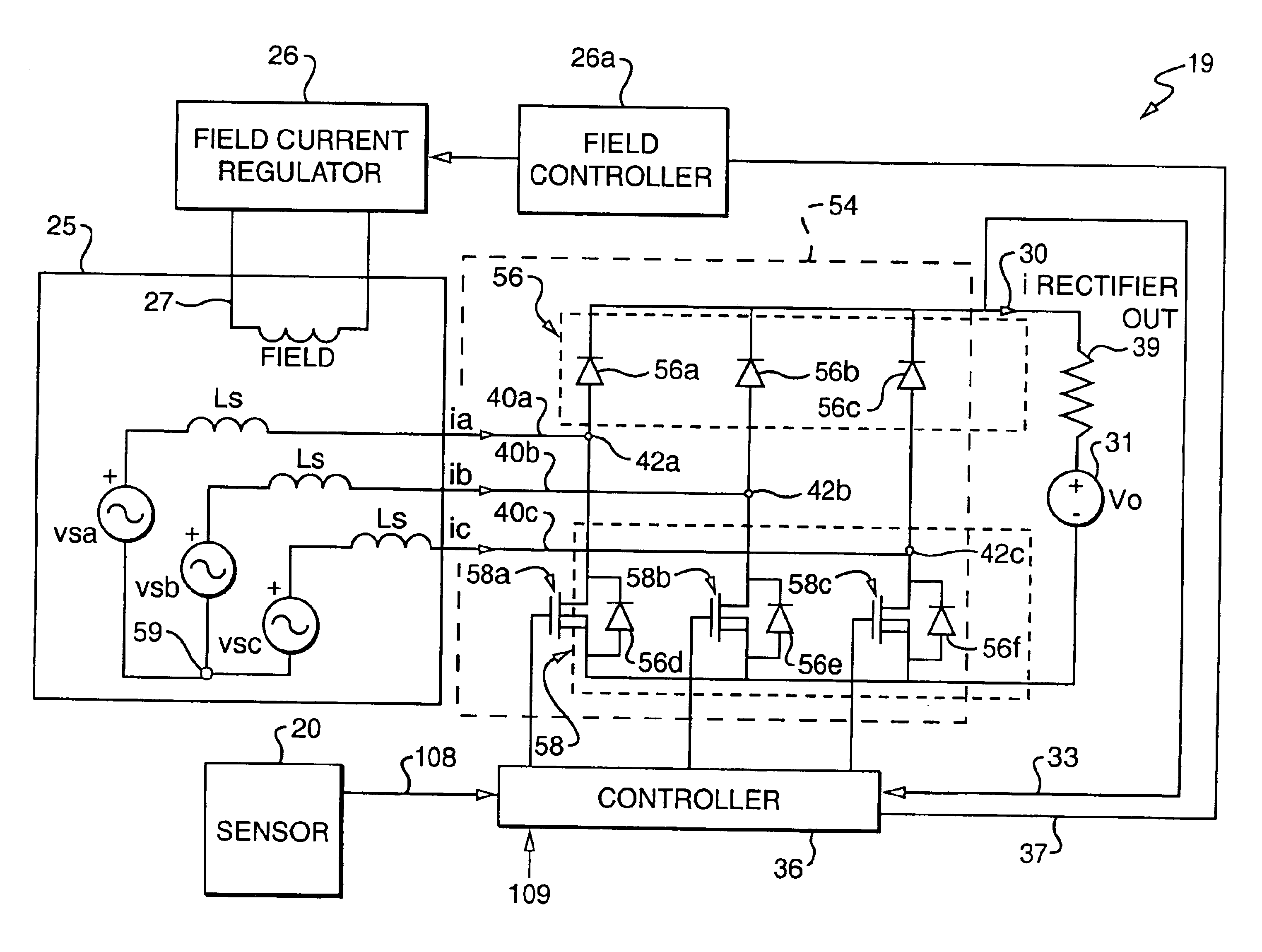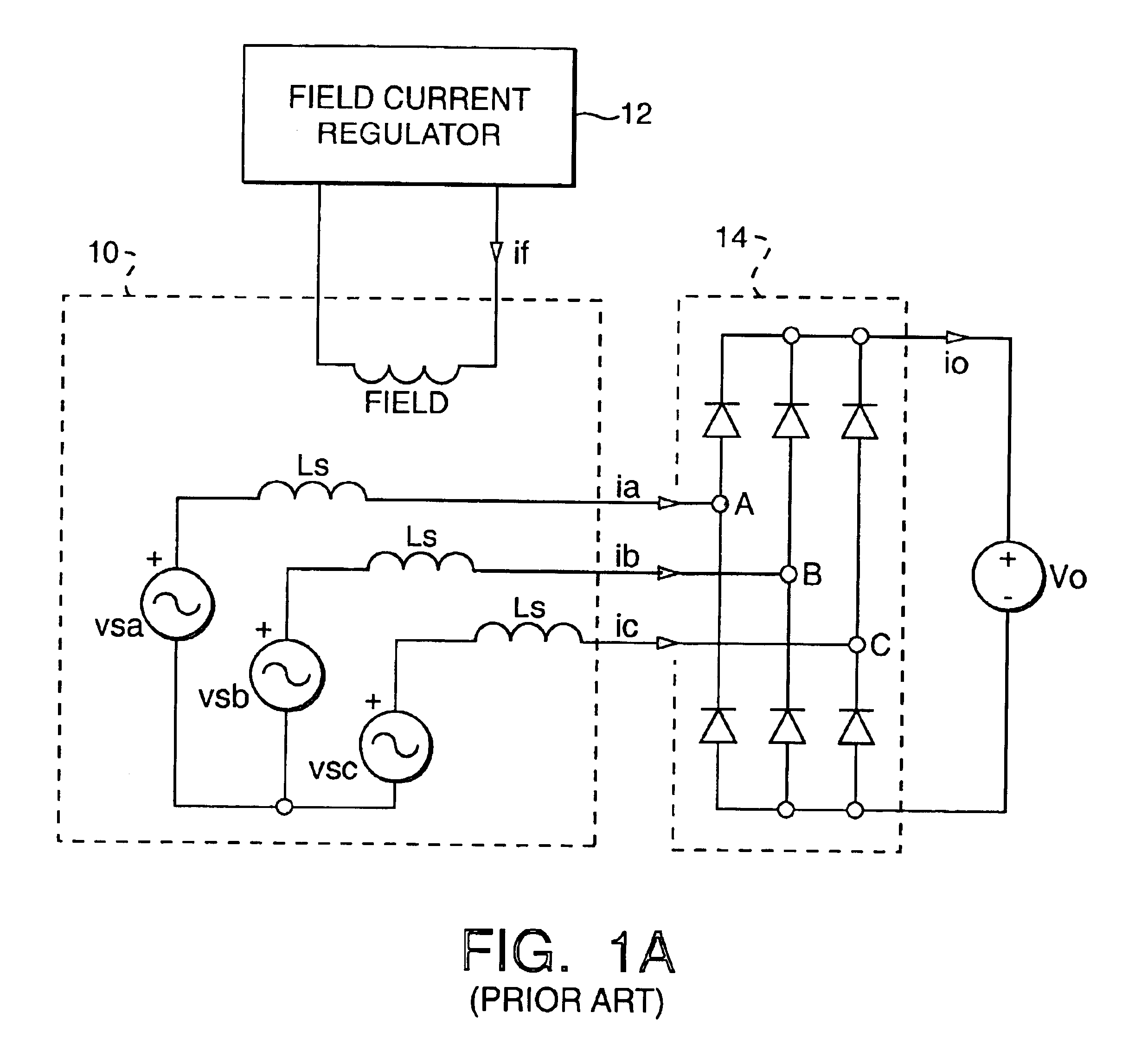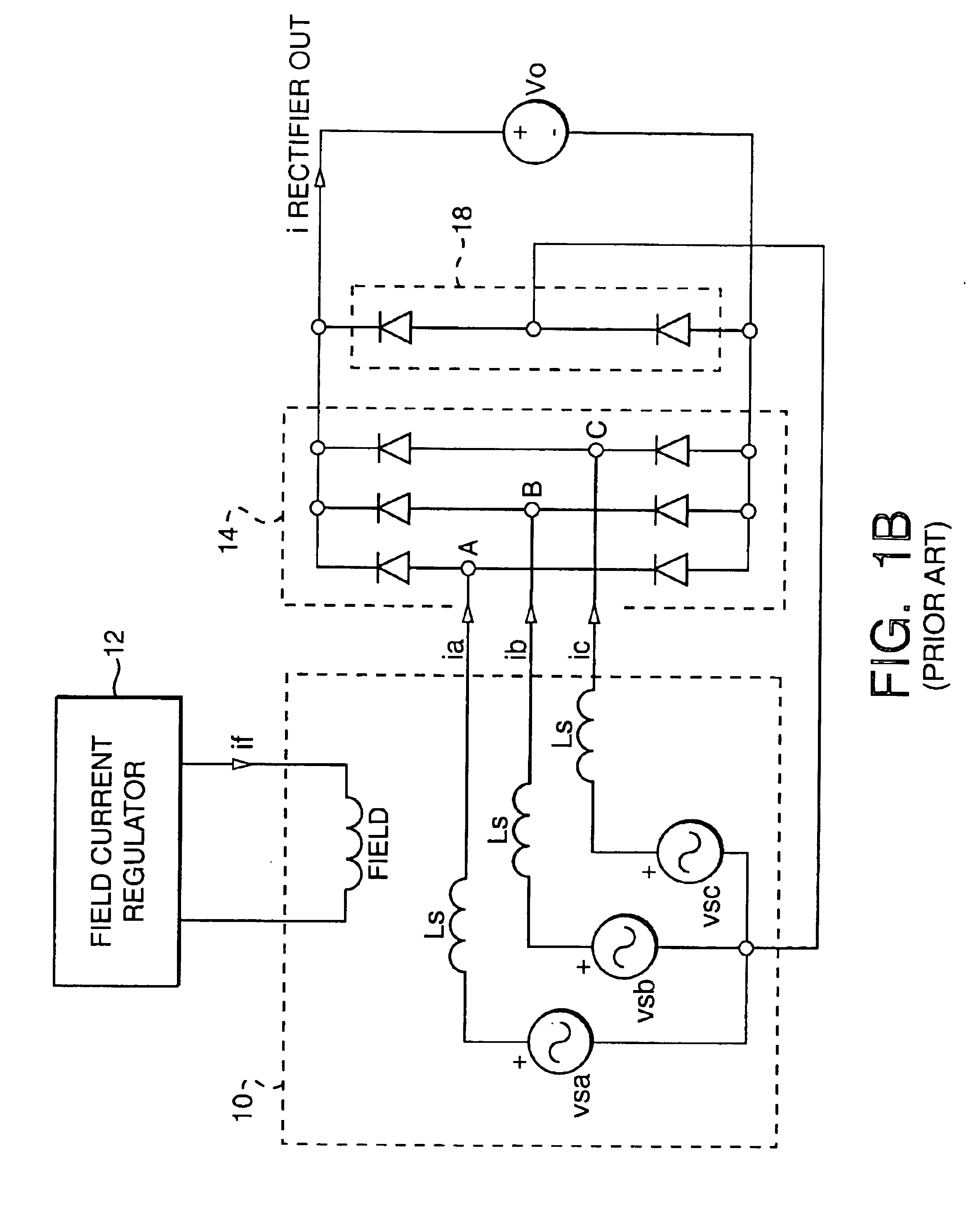Alternator control circuit and related techniques
a control circuit and control circuit technology, applied in the field ofalternator systems, can solve the problems of heavy load regulation, strong influence of inductance on machine performance, and increase in output current and machine operating speed with increasing output current and machine operating speed, and achieve low cost, high power level, and power output improvement
- Summary
- Abstract
- Description
- Claims
- Application Information
AI Technical Summary
Benefits of technology
Problems solved by technology
Method used
Image
Examples
Embodiment Construction
[0049]As noted above, those of ordinary skill in the art sometimes refer to the ac machine itself as an alternator while at other times those of ordinary skill in the art refer to the combination of the ac machine coupled to a rectifier circuit also as an alternator. To promote clarity in the text, the term “alternator system” will be used herein to describe a system which includes an ac generator portion and a rectifier portion. The ac generator portion may also be referred to as an “ac machine,” an “ac generator,” a “generator” or an “alternator” while the rectifier portion of an alternator system will be referred to herein as a “rectifier” or a “rectifier circuit.” The term “ac voltage source” is intended to cover any type of source which can be used with the present invention including but not limited to an alternator. The term “control circuit” or “controller” is intended to cover any type of discrete logic, microprocessor, and any combination of microprocessors and discrete lo...
PUM
 Login to View More
Login to View More Abstract
Description
Claims
Application Information
 Login to View More
Login to View More - R&D
- Intellectual Property
- Life Sciences
- Materials
- Tech Scout
- Unparalleled Data Quality
- Higher Quality Content
- 60% Fewer Hallucinations
Browse by: Latest US Patents, China's latest patents, Technical Efficacy Thesaurus, Application Domain, Technology Topic, Popular Technical Reports.
© 2025 PatSnap. All rights reserved.Legal|Privacy policy|Modern Slavery Act Transparency Statement|Sitemap|About US| Contact US: help@patsnap.com



